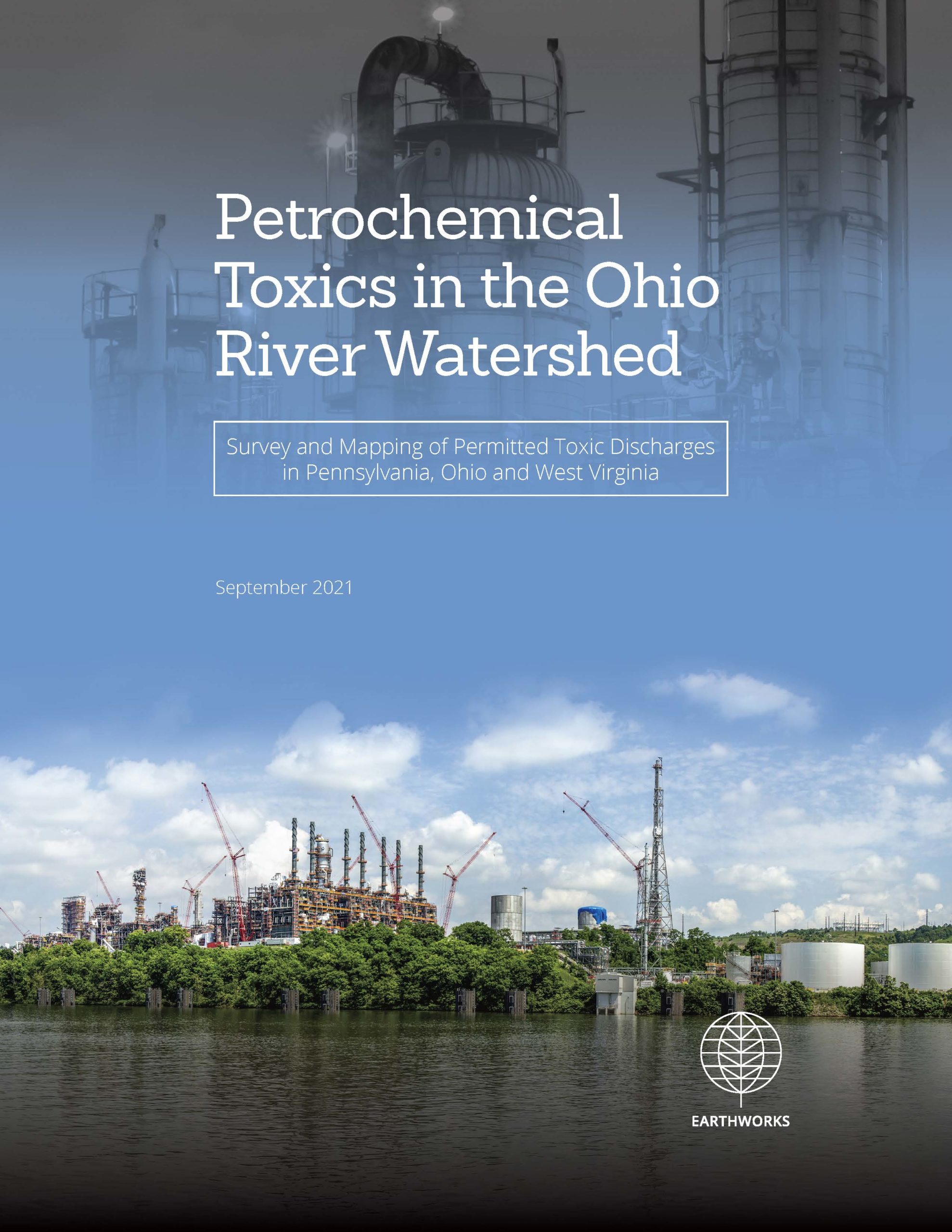On this page:
- Executive Summary
- Map and Data
Executive Summary
On the banks of the Ohio River in southwestern Pennsylvania, one of world’s largest fossil fuel companies, Royal Dutch Shell, is building a petrochemical complex that, if it becomes operational, will flood the world with 1.6 million tons of plastic each year. This toxic facility is just the first in a planned buildout that could turn the Ohio River valley into a petrochemical hub similar to what exists along the Mississippi River between Baton Rouge and New Orleans, known as “Cancer Alley.” Such a buildout would have devastating consequences on the Ohio River and the millions of people that rely on it for drinking water. Before further expansion of the petrochemical industry occurs in the Ohio River Basin, it is important to understand the industry’s current footprint and how much toxic pollution is currently discharged into the Basin’s streams and rivers.
Methods
To understand the petrochemical industry’s current footprint in the upper Ohio River Basin, we used public databases maintained by the Environmental Protection Agency (EPA) to search for petrochemical-related facilities that had National Pollutant Discharge and Elimination System (NPDES) permits. Once the NPDES permits were compiled, we reviewed each permit to find toxic chemicals that are permitted to be discharged into rivers and streams. Only those toxic chemicals that had mass-based numeric discharge limits (e.g., kg/d) were included in this analysis.
Of the permits reviewed containing mass-based discharge limitations, petrochemical facilities are permitted to annually discharge over 500,000 pounds of toxic pollutants into the Ohio River Basin within Ohio, Pennsylvania, and West Virginia. These toxic pollutants include known carcinogens like benzene, vinyl chloride, and tri- chloroethylene and over 100 other chemicals that can affect human health in a variety of ways, including birth defects, developmental disorders, and effects to the central nervous system and endocrine system.
Shell’s ethane cracker will significantly increase the rate of permitted discharge of several toxics, including vinyl chloride (68% increase) and trichloroethylene (75% increase).
Takeaways
Shell’s ethane cracker will increase the rate of permitted discharge of toxic vinyl chloride by 68% and trichloroethylene by 75%.
The Ohio River is already considered one of the most polluted rivers in the country and there are several petrochemical facilities within the watershed that are hazardous waste sites. The expansion of the petrochemical industry in the Ohio River Basin would exacerbate these impacts for the millions of people who live there and rely on the Ohio River for drinking water.
Regulatory agencies have also weakened standards meant to improve and protect water quality at the same time that the petrochemical industry targets the Ohio River Basin for expansion. If what’s past is prologue, action must be taken now to prevent further expansion of this toxic industry.
MAP: Petrochemical sites in the Ohio River Basin
This map, built by the FracTracker Alliance, shows petrochemical sites and visualizes the mass of toxics they are permitted to discharge within the Ohio River Basin in Ohio, West Virginia, and Pennsylvania.
View the map “Details” tab below in the top left corner to learn more and access the data, or click on the map to explore the dynamic version of this data. In order to turn layers on and off in the map, use the Layers dropdown menu.

